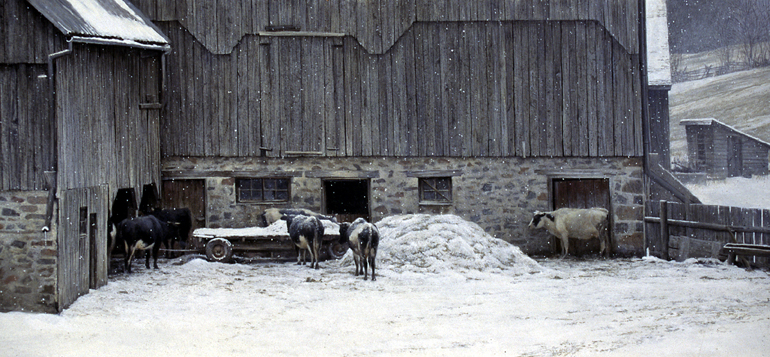- Winter Barnyard
- (scroll down for description)

-
-
-
-
-
-
-
-
-
-
-
- 18” x 40”, acrylic on board, 1995
-
- The barn with its cattle symbolizes for me a wonderful era in the relationship of man to man, and man to animal. This time began thousands of years ago but was refined a few years ago in the temperate zone of Europe and then North America. Soils and climate were good for producing crops but the catch was winter. If people could produce a surplus, the problem was storage . . . thus the invention of the barn.
-
- The Europeans who came to North America found the wonderful white pine in abundance. It was easily worked with a broad ax into strong, straight beams which could be joined by mortise and tenon. The planks on the outside came from the same pines and the base of the barn was made of field stones which usually were part of the clearing process. The whole building was like a living thing that literally "breathed" with animals below and a well ventilated and flexible hayloft above. The legendary barn building "bees" were part of the fibre of the rural community where everyone - men, women and children had a part to play in an unselfish social, communal effort. It was humanity at its best - great work and great fun at the same time.
-
- The animals in a traditional farm were known as individuals and usually had names. Although they often sacrificed their lives to humans, they were treated with care and respect.
-
- I greatly lament the trend at the end of the 20th century to industrialize almost everything including farming. The disastrous effects this has had on rural populations - pollution, debt and over-production - causes me to wonder if the so-called cheap, efficient, new methods might actually be too costly in the long run. Let's begin to take another look at traditional agricultural methods which clearly have a more gentle and more sustainable interface with nature and are more fulfilling for the human spirit.

